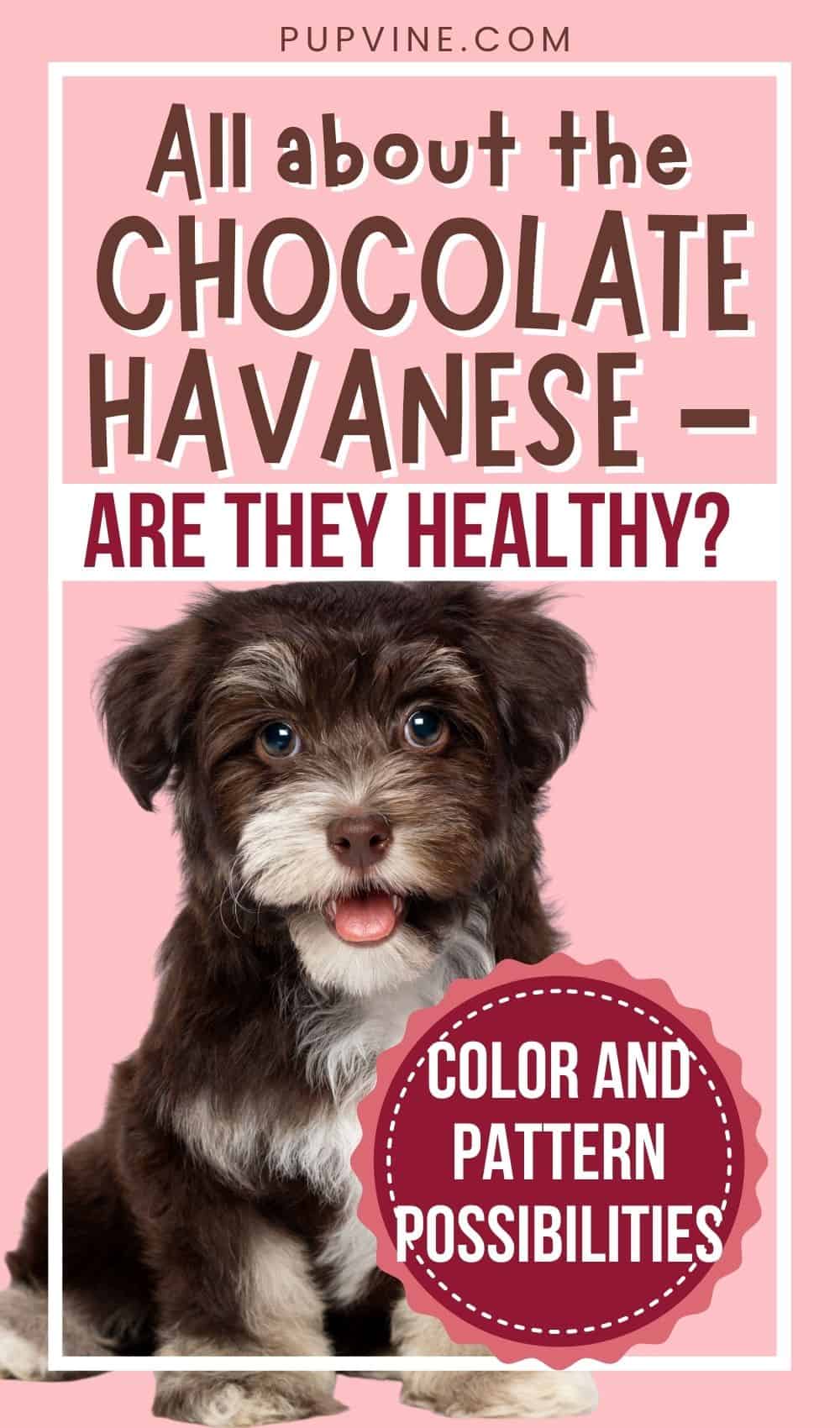When researching the chocolate Havanese, you might have come across plenty of adorable pictures online. Many people don’t even know these pups can come in such a color!
However, these dogs are also connected to plenty of stories about inbreeding, health problems, and unethical breeding. All of these murmurings might make you give up on your decision to adopt this pup.
In most other dog breeds, breeding chocolate dogs is perfectly fine. In fact, many working dogs or hunting dogs come in chocolate color, and they look entirely gorgeous.
Some dogs, such as Labrador Retrievers, German Shepherds, German Pointers, Brittany Spaniels, and so on can also come in a chocolate shade, and there is no indication that this coat color in these dog breeds causes any health issues.
So, why would this be any different in a chocolate Havanese? Is there truth to these rumors? Here’s what you need to know:
What Is A Havanese
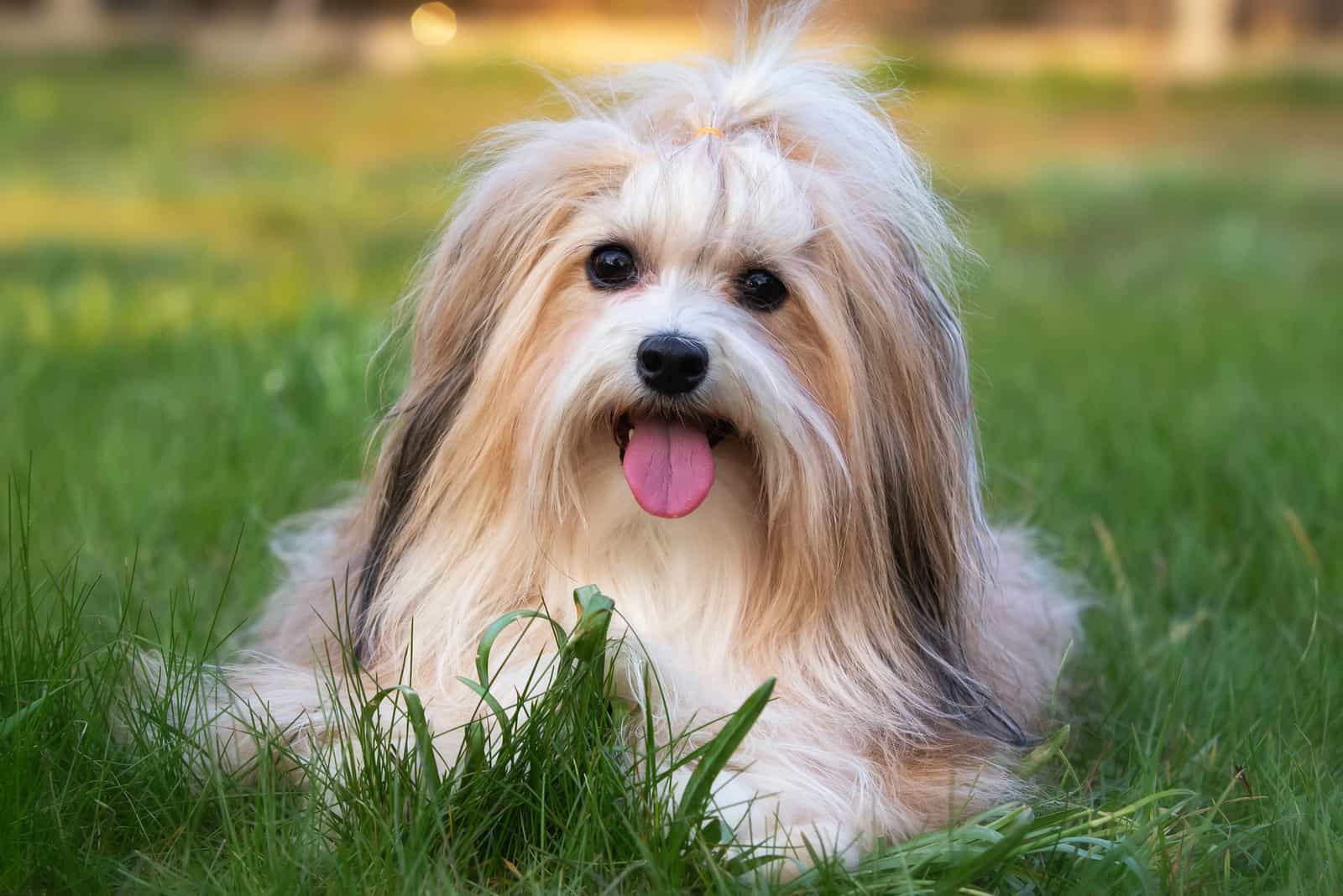
A Havanese is a small dog with a loving personality. These lap dogs have silky coats and curled-over tails that give them a unique appearance. If you buy one, you’ll have a family pet that will love to cuddle with you all the time!
Just like Poodles or Bichon Frises, Havanese are considered some of the best dogs for living in apartments, condos, or other confined spaces. This is due to their small frame and hypoallergenic fur.
Their coat comes in several colors. According to the American Kennel Club (AKC), the standard colors are:
• Black
• Black Brindle
• Cream
• Fawn
• Gold
• Sable
• Red
• White
• Silver
• Chocolate
• A combination of two standard colors
As you can see, these amazing dogs come in plenty of colors. However, a beautiful chocolate Havanese is the dog that will always be the center of attention!
Are Chocolate Havanese Puppies Unhealthy?
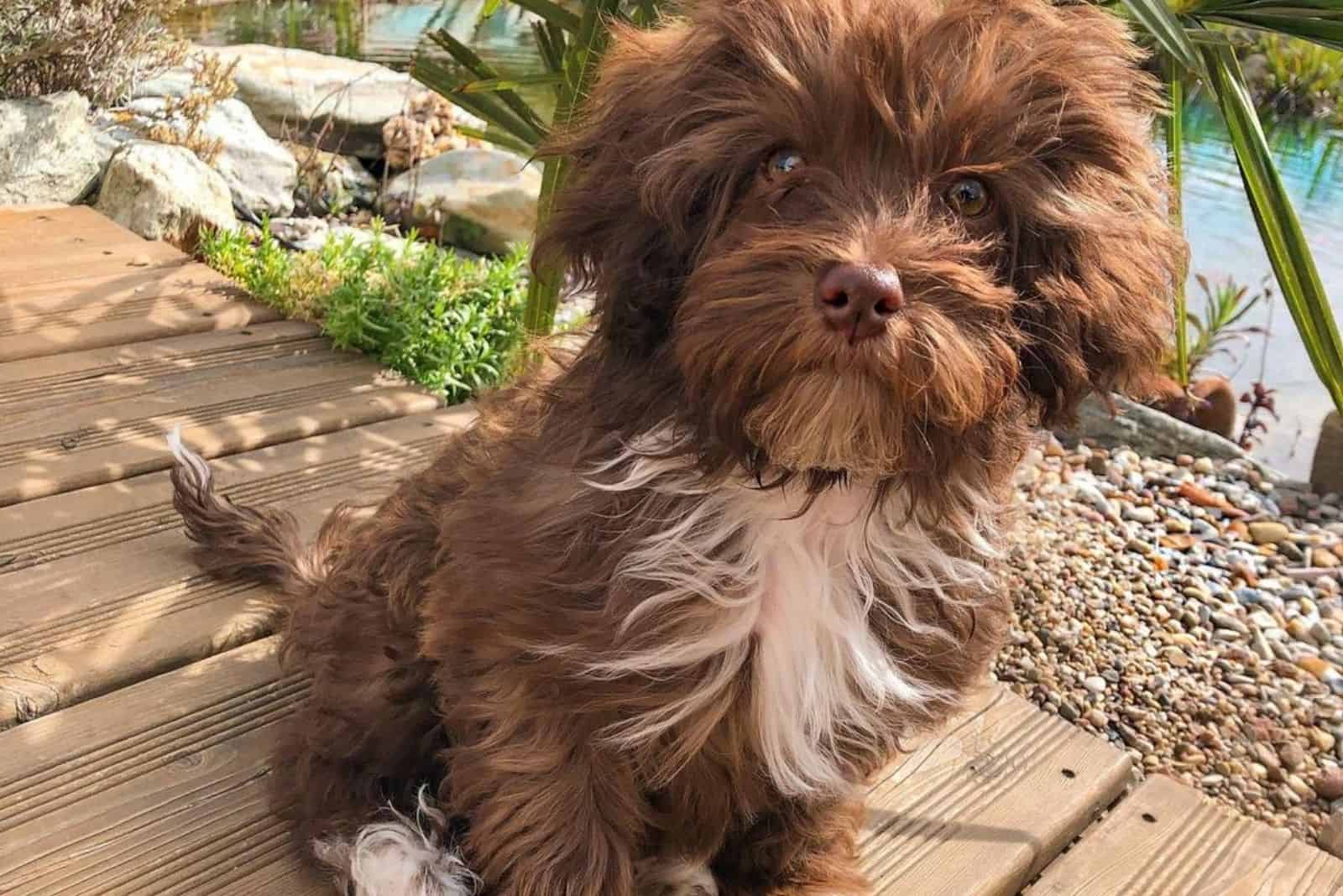
Despite many rumors circulating about chocolate Havanese dogs being extremely unhealthy, it doesn’t take much research to find that there isn’t really any proof of these claims.
While exact research wasn’t conducted, many people have checked the genetics of puppies with two chocolate parents. According to the health tests, all of these puppies had an equal chance of developing some genetic health issue as Havanese puppies in other colors.
So, how come these rumors exist?
In the EU, the FCI didn’t recognize chocolate Havanese puppies as a breed standard until recently. In fact, earlier breeders did all they could to get rid of puppies that carried the chocolate gene as they wanted to keep the breed pure.
This wasn’t only the case with Havanese. For example, in the 1800s, chocolate Labradors were regularly killed at birth, and some of those that did live were kept unregistered. However, as the chocolate gene is recessive, it couldn’t be erased from the breed as easily.
Not all breeds were as lucky. Breeders wanted to eliminate the black gene from Brittany Spaniels (or, rather, what they thought was a black gene), so they killed all dogs in this color. It turns out that these dogs were dark brown or dark chocolate in color instead.
As a result, the chocolate pigment was indeed erased or significantly reduced from the gene pool of many dog breeds, including Havanese.
Genetics
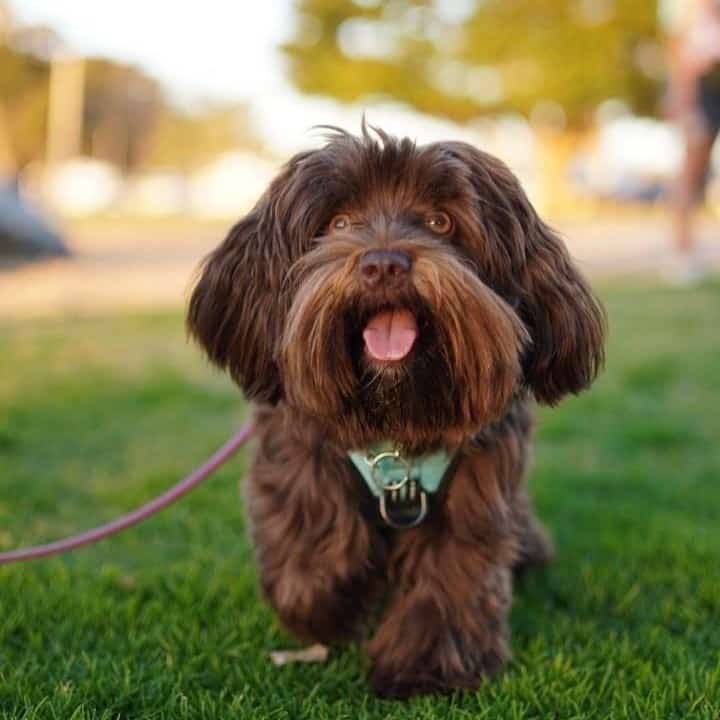
Photo from: @hava_penny
The chocolate coat color is the result of a rare recessive gene. A dog needs to have two copies of this gene in order to express this exotic color. In other words, both parents need to carry a chocolate gene for the puppy to be in this color.
This is caused by the B gene, the same gene responsible for the black pigment. Both black and chocolate/brown coat colors are caused by eumelanin; the type of pigment responsible for black color.
What determines whether the color will be black or chocolate color is the chemical shape of the pigment’s particles. If the color is recessive chocolate, it is designated with a lowercase ‘b’. Each dog has two of these alleles, so its genetics can be marked with two letters.
What could happen now is that you would have two parents – let’s say, a father with the BB (black) gene and a mother with the bb (chocolate) gene. If you mate them, then all of the puppies will have the Bb gene. The dominant B will overcome the recessive b, so the dog will be black in color.
The dog needs to have a bb combination in order to be in chocolate color. This can happen if both parents have the bb gene (100% of puppies will also be chocolate), if one parent is Bb and the other is bb (75%), or if both parents are Bb (50%).
If this is a bit confusing, here’s a visual representation
[table id=64 /]
Many experts believe that the chocolate gene didn’t naturally occur in the Havanese breed. In fact, they consider dogs of this color to be mixed dogs whose one parent breed is Havanese – even though these pups look just like any other Havanese dog, except for their coat color.
Keep in mind that in the Havanese dog breed, ‘chocolate’ doesn’t indicate a coat color. In fact, the fur of these dogs can come in almost any possible color.
The chocolate gene will express itself on the nose, eye rims, lips, feet pads, and even skin! If a Havanese has these body parts in brown color, it is, in fact, a chocolate Havanese.
Still, a chocolate Havanese should have a patch of at least an inch of chocolate hair. The shade can vary anywhere from dark chocolate to a light Café Au Lait. However, it can also come in these color combinations:
• Chocolate sable
• Chocolate brindle
• Chocolate silver
• Chocolate with tan points
• Red chocolate
• Merle chocolate
• Chocolate parti
How Much Do Havanese Puppies Cost?

If you’re considering getting yourself a chocolate Havanese puppy, you’re probably wondering how much these pups cost.
Well, if you’re looking at the average price of a Havanese puppy, you can find that the numbers go between $1,000 and $1,500. However, since chocolate Havanese are rare, their price is usually on the higher end of the spectrum.
In fact, some chocolate Havanese puppies can cost up to $3,000!
Sure, you can find Havanese puppies at a much lower price. Many puppy mills sell them at a price of just $700. Some back yard breeders go even lower than that! But, there is a good reason behind this price difference.
Chocolate Havanese Puppies For Sale

It’s in human nature to look for the most affordable option when it comes to buying anything, including dogs. However, it isn’t smart to go cheap on pets no matter the species.
In the case of chocolate Havanese puppies, you should strive to get a healthy puppy that will stay with you for a very long time. To do this, you should always buy from reputable breeders only.
Reputable breeders take good care of their breeding dogs and their litter. Most importantly, they’ll conduct all the necessary health tests to ensure their dogs are in good health and don’t carry any genetics for some severe health conditions.
At the same time, many will begin early socialization and training their puppies. This means you won’t have to spend as much time training them or worrying about correcting some bad behavioral habits.
On the other hand, puppies from pet mills, back yard breeders, and pet stores usually haven’t gone through the said testing, and there isn’t any guarantee that they’ll be healthy. Also, they don’t care about the environment the dogs are in.
In the other words, while you may end up with a lower initial cost, you’ll likely pay the difference – and much more – on the cost of obedience training as well as possible medical costs.
Chocolate Havanese Breeders

Finding a reliable chocolate Havanese breeder is the key for having a gorgeous, loving pup that will be healthy.
If you’re looking for a high-quality chocolate Havanese puppy, you might want to check out HavaHug Havanese Puppies. This is one of the biggest chocolate Havanese breeders out there, and their dogs come with a health guarantee.
Of course, HavaHug Havanese Puppies isn’t the only breeder that can help you get a hold of a chocolate Havanese. There are plenty of other breeders out there that can be just as good.
Talk to other Havanese owners and check out dog forums to see which breeders are responsible and take good care of their litters.
If you buy a dog from an irresponsible breeder, your dog might face plenty of health issues, such as heart murmurs, eye disorders, patellar luxation, and Legg-Calve-Perthes disease.
Chocolate Havanese Color Combinations

There are approximately ten different genes that are in control of the coat color in a Havanese dog. Every gene controls either a certain part of the coat color or the exact shade of the color.
There are two kinds of pigments in a dog’s coat. Eumelanin is responsible for the black and brown shades while phaeomelanin is responsible for yellow and red shades.
With this in mind, it’s easy to see that chocolate Havanese don’t come in one shade only. They can come in plenty of shades of brown, and they are rarely in just one color.
Here are some of them!
Chocolate Havanese
A standard chocolate Havanese is a dog that comes in only a chocolate or a liver-colored coat, together with a brown nose, lips, eye rims, and soles. True chocolate Havanese can never have any black pigment on its face.
Its eyes are either brown, hazelnut, or amber. They have the bb allele, which means that a dominant B gene cannot be present in its DNA.
Dark Chocolate Havanese
As we’ve mentioned before, chocolate Havanese can come in various shades, and dark chocolate is one of them. Their coat can be so dark that it will look almost entirely black, but they can be distinguished by having a brown nose instead of a black one.
Dark chocolate Havanese aren’t rare among chocolate dogs, but they can sometimes be confused with black dogs. If you’re unsure as to whether your dog is a black or a chocolate Havanese, always look at the rest of its body, and not just its coat color.
Havanese Chocolate and White
A chocolate and white Havanese can be found in several different patterns, but the most common one is tuxedo.
This means that the dog’s back, ears, eyes, and back legs are in the chocolate color while the rest of its body is white. However, the chocolate color might extend over the dog’s forehead and back as well.
Chocolate and white dogs can also have the piebald pattern, also known as a pied or a parti Havanese. This means that they have large, irregular spots on their body.
Chocolate and white Havanese are very sought after, which can make them somewhat expensive.
White Chocolate Havanese
This dog color combination is almost the same as a chocolate and white Havanese. The only difference is in the amount of colors present.
The first color in the shade name is always the one that is distributed the most on the dog’s fur. This means that in chocolate and white Havanese, most of their bodies are brown.
However, in white chocolate Havanese, most of their bodies are white, with some brown markings. These markings can vary anywhere from tuxedo to pied, just as in the previous color combination. Still, the biggest part of a dog’s body would remain white.
Chocolate Sable Havanese
A chocolate sable Havanese is somewhat rare, even among the chocolate Havanese dogs.
This dog is a chocolate Havanese, but with darker hair tips. Their undercoat is usually light brown, with dark chocolate tips.
In most sable dogs, these dark tips would be black. However, as black cannot be present on chocolate Havanese, these tips can only be very dark brown.
The amount of tipping can range anywhere between very light and very heavy. Each sable hair will be variegated all the way from the root to the tip.
These sable coats can change color as the dog grows older, but sable dogs will always retain darker hair tips.
Red Chocolate Havanese
Red Havanese are not as popular as some other coat colors, but they do exist. Commonly, the red coat color is created by the phaeomelanin, the pigment responsible for golden shades.
But, some red Havanese are, in fact, chocolate Havanese.
The easiest way to see whether this is the case with your pup is to look at its nose color. If your pooch has a brown nose, this means that they carry the recessive b allele. However, if their nose is black or pink, then the dog is a regular red Havanese.
Chocolate Silver Havanese
There is a special shade of chocolate Havanese that looks almost perfectly grey. These dogs are called ‘chocolate silver’. Keep in mind that this coat shade isn’t accepted by the AKC.
Some silver dogs are the result of poor pigment distribution. These pups cannot be considered chocolate Havanese dogs.
Once again, the best way to determine whether a dog is a chocolate Havanese or some other color is to look at its eyes. Chocolate Havanese will always have eyes in some shade of brown color.
If your silver dog has blue eyes, but a brownish nose, then he is not a chocolate Havanese. Silver Havanese should always have bright brown eyes that resemble the amber color.
Chocolate Silk Havanese
Chocolate silk Havanese dogs aren’t, in fact, the same type of Havanese as the others. They belong to the special type of Havanese called ‘Havana silk’.
If you look at them, these companion dogs might remind you of other toy dog breeds, such as the Shih Tzu.
‘Silk’ doesn’t refer to the color, but rather, to the coat type. These dogs have a long, flat coat that is as soft as silk, with longer legs, and a refined muzzle. All of this causes many canine societies and kennel clubs to recognize them as an entirely different breed from Havanese dogs.
These dogs, too, can come in a chocolate color, and the genetics behind this has stayed the same. However, this color is very rare as it isn’t overly desirable. When they do come in chocolate, they will usually be bicolor.
Dilute Chocolate Havanese
Color dilution in dogs is caused by a recessive gene that ‘waters down’ the color, making it a paler version of the original shade. This gene commonly affects the eye color as well as the color of the nose, lips, pads, and eye rims.
Even though the brown coat color itself isn’t caused by dilution, it can be diluted to create a gorgeous shade known as Café Au Late or “milk chocolate”.
Diluted chocolate Havanese dogs usually have a lighter eye color as well. The eyes will usually be amber or light brown – but blue eyes won’t appear in chocolate Havanese.
Chocolate Merle Havanese
While a variety of colors exists in the Havanese’s gene pool, merle is the only one that can be dangerous.
Merle isn’t a standard color in Havanese; it’s very rare. In fact, most breeders will refuse to breed dogs with this gene as it’s connected with a plethora of genetic issues.
It is caused by a special dominant merle dilution gene. This gene dilutes all the pigments inside a canine’s body, including the ones found in its ears and eyes.
This can lead to nerve end damage on these parts, leading to many problems with sight and hearing, which can result in deafness or blindness. At the same time, they can suffer from many cardiac and bone problems.
Dogs with a single merle gene will have a noticeable merle pattern. Chocolate merle Havanese dogs will likely have specks of dark chocolate and Café Au Late color mixed with white markings.
These dogs will usually have either one or both eyes in blue colors. Heterochromia is very common, both central and partial.
If the base color of a dog with a diluted gene is chocolate, then these dogs are known as merle chocolate Havanese.
In a Havanese with a single merle gene, health issues usually won’t be as noticeable. These are the dogs with a distinguishable merle pattern as their pigmentation was unevenly diluted.
Avoiding double merle dogs seems like an easy task. You simply shouldn’t breed two dogs with a merle pattern, and there won’t be an instance of one.
However, some dogs carry the cryptic merle gene. This gene stays hidden, and a dog is a merle, but without any changes in the coat or eye colors. In other words, unless you take your dog for expensive genetic testing, you wouldn’t know whether the dog has a merle gene.
Double merles have a coat that is entirely devoid of any pigment, making it white. Their noses will be pink, and they’ll have blue eyes or heterochromia. Most of these dogs will be deaf.
Because of all the issues that come with a merle pattern, most responsible Havanese breeders won’t breed merle chocolate Havanese dogs.
Do Havanese Change Color?

Talking about the coat color of the Havanese breed can be a bit tricky. This is because this is one of the few breeds that changes color as it grows older.
The Havanese has a modifying gene inside its gene pool. This gene impacts the alleles responsible for pigmentation, causing them to change over time.
Most Havanese dogs will stay the same shade throughout their lifespan. However, this is usually because the shade change is so slight that most dog owners won’t notice it. In others, however, the change is obvious and almost rapid.
This color change doesn’t occur the same way in all coat colors. For example, light-colored Havanese don’t have a huge shade change. White Havanese might even stay the same throughout their life – but a partially white Havanese might experience some ticking or pigmented spots.
Darker coat colors, such as chocolate will showcase a heavier color change. It will usually become lighter as the dogs grow older.
On some occasions, a Havanese coat color will become lighter before reverting back to the darker color!
Of course, a black Havanese could never become white. We’re talking about shade changes. The entire color or the amount of phaeomelanin and eumelanin in a dog can never change. It all comes down to how the color expresses itself.
Chocolate Havanese Color Change
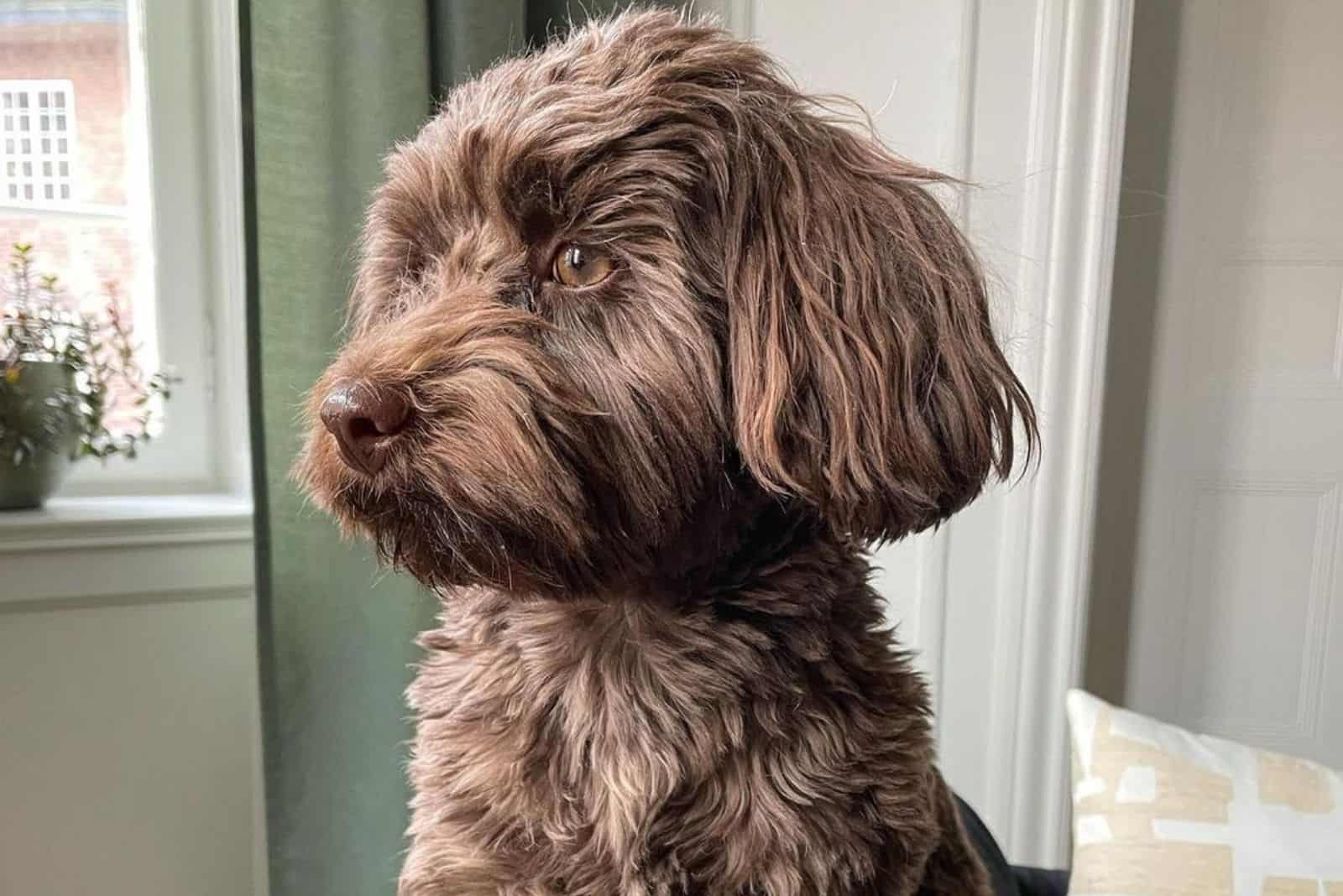
Chocolate Havanese are most likely to change coat color. In fact, most of them will become silver over time.
This is one of the reasons why many aspiring dog owners hesitate to take a chocolate Havanese. They never know what their dog will look like after several years have passed!
Even if they don’t become silver, some chocolate Havanese will look as if their coat shade has diluted. You may buy a chocolate Havanese and end up with a cream one a few years later!
Sable chocolate Havanese will change color the most out of all brown dogs. These coats can often become more silver as the dogs grow older. However, their tips will always stay significantly darker than the rest of the fur.
Keep in mind that one thing that stays more or less the same with chocolate Havanese pups is their nose color. While the fur color might change – or it might not even be brown to start with! – the nose color and the eye color always have to be brown.
Chocolate Havanese Full Grown
Many people aren’t aware that Havanese dogs can stay in chocolate color once they become adult dogs. This is because of the color change we’ve mentioned.
Most adult chocolate Havanese dogs, especially those in full chocolate, don’t look brown. Their fur will look grayer than anything.
Because of this, you can never say whether a dog is truly a chocolate Havanese without looking at its nose, eyes, and feet pad colors. They are the true indicators of a brown bb gene.
Can You Prevent The Color Change?
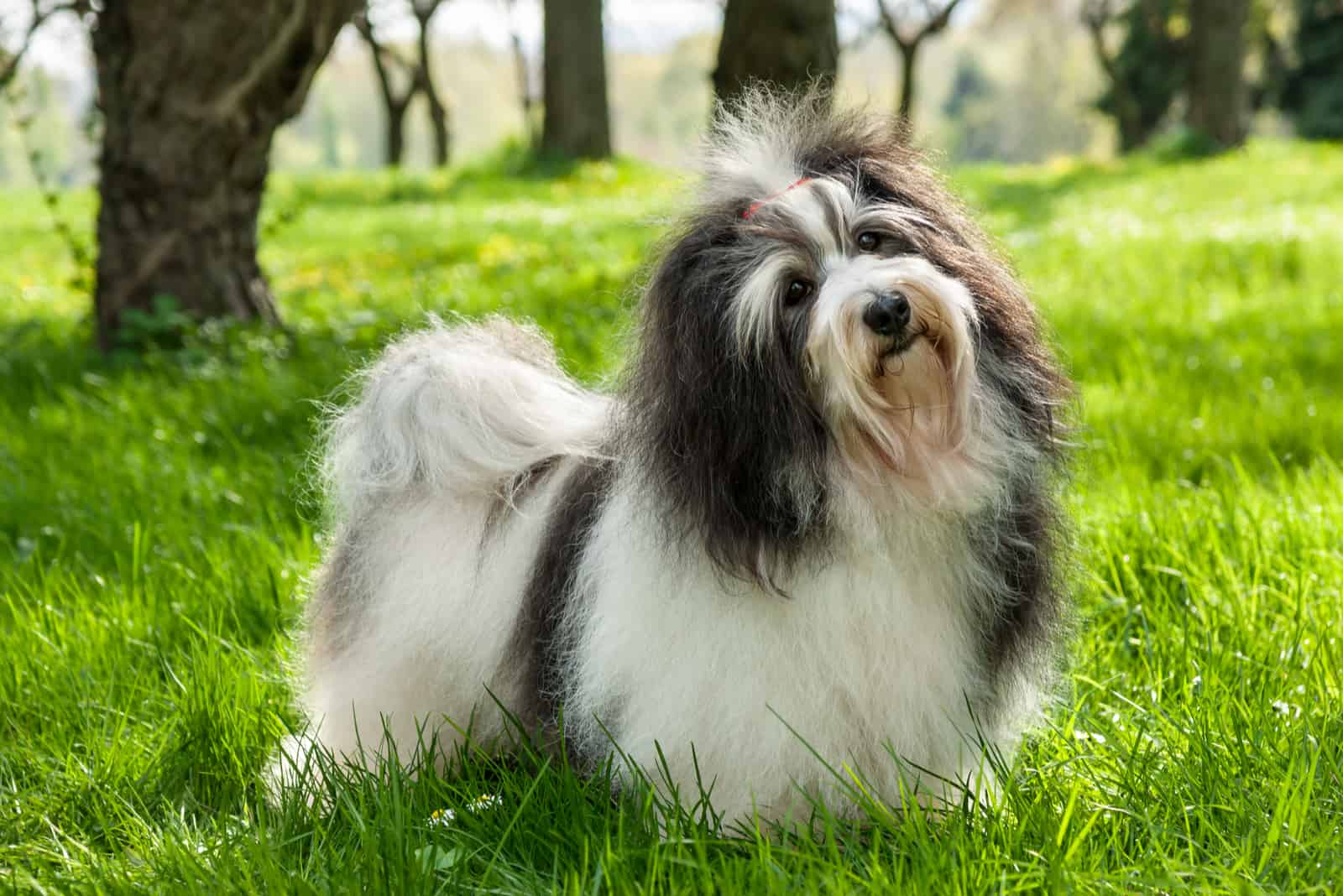
Unfortunately, there is nothing that you can do that will stop a chocolate Havanese from changing color. This is something that happens due to genetics, and external factors have very little to do with it.
Some Havanese owners have reported that dogs that don’t spend a lot of time in the sun experience less color change, but there isn’t any proof of this. This can stop the fading of the color due to sun damage done to the hair follicles, and nothing else.
However, there isn’t any reason why you should be upset about your dog changing coat color. In fact, this is the reason why Havanese are so unique! Most dogs won’t change at all during their lifetime, and this can be boring to some.
With Havanese, it can be exciting to see the change your dog goes through as it ages. Some changes might happen unpredictably, such as in the middle of adulthood!
Overall, Havanese are amazing companion dogs that should be loved for more than just their coat color. Still, if you’d like to have an exotic variation, then chocolate Havanese are always an excellent choice!
